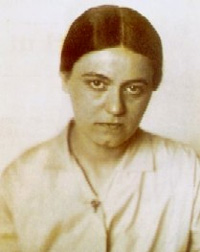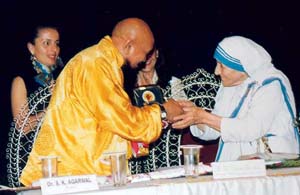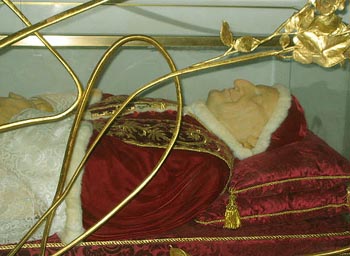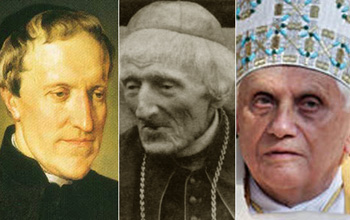 |
NEWS: March 25, 2008
Bird’s Eye View of the News
Atila Sinke Guimarães
NEW SAINTS: A LACK OF CONSISTENCY - At a recent press conference, Cardinal José Saraiva Martins, prefect of the Congregation for the Cause of the Saints, announced the new instruction for beatifications and canonizations under the pontificate of Benedict XVI. It is called Sanctorum Mater [The Mother of Saints]. Card. Martins explained that this instruction “is not a new more rigorous law, but simply a more rigorous application of the existing law.”
He said that a “strict adherence” to the rules of the canonization process should avoid previous procedures that had become “problematic” due to poor documentation. He stressed that there has been “confusion” in the first phase of the processes that take place in the Dioceses where the candidates lived. The investigations should not be pushed forward by the enthusiasm of small interested groups, but from the candidates’ “stable, continuous and widespread” reputation of holiness. Also the inquiry should not neglect negative accounts (America, March 10, 2008, p. 4; The Tablet, February 23, 2008, p. 36).
So far, so good. If taken seriously, this indirect critique of JPII’s unsubstantiated canonizations bypassing established rules appears sufficient to remove from the ranks of sainthood many of the persons hastily awarded this title. As example, let me mention just a few processes where “strict adherence” to the rules was not observed:

Edith Stein - canonized for her adherence to Modern Philosophy? |
• Edith Stein - canonized as a martyr; however, she did not die in defense of the Catholic Faith, as the declaration of martyr demands. She was a Catholic nun who was taken prisoner by the Nazis because she belonged to the Jewish race. She was transferred to a concentration camp and died there for the latter reason. No details of her death in the gas chamber are known that would permit one to state that she died as martyr. Thus, there is a fundamental error of form sufficient to annul her canonization.
I surmise that the real cause for granting her this title was because she had been a disciple of Edmund Husserl - as Woytyla had been a disciple of Max Scheler - and she wrote a book trying to justify the thinking of Husserl based on St. Thomas, just as Woytyla wrote his dissertation trying to justify Scheler’s philosophy based on St. Thomas’ Scholasticism. Both Stein and Wojtyla were fervent admirers of Modern Philosophy. Her canonization appeared to be an attempt to legitimize this philosophy.
• Maximilian Kolbe - canonized as a martyr; here also, there was a basic error of form. There is one procedure for a martyr; for a common saint it is completely different. Kolbe did not die in defense of the Catholic Faith; rather, he offered his life in the place of another prisoner, a Jew, in the concentration camp of Auschwitz. It was an act of charity, not an act of martyrdom. Again, JPII cheated in the process. The real cause seems to be that John Paul II wanted to encourage Catholics to collaborate with the Jews; ultimately he meant to please the Jews.

Giving an award to Buddhist Lama Gangchen |
• Mother Teresa - The alleged miracle for her beatification - the cure of a woman in India suffering from ovarian cancer - was denied by the entire team of doctors who were caring for the woman. They declared their patient could well have been cured by the treatment she received. The woman’s husband also believed the cure resulted from the medical treatment, not a miracle. The testimonies of these important witnesses were completely disregarded.
To please JPII, the Vatican doctors set aside the opinions of their Indian colleagues and declared the cure an indisputable miracle. Instead of treating the case with the required gravity, they chose the easy route of gratifying the boss. I think that the real cause was Woytyla’s desire to foster inter-confessionalism, since Mother Teresa continuously defended that all religions lead to eternal salvation.
• John XXIII - In the process to canonize Pope Roncalli, the investigation of the orthodoxy of the candidate’s thinking and written works was completely disregarded. How could Roncalli, a fervent and unceasing admirer of Buonaiutti and an indirect supporter of Communism, pass the test of orthodoxy? Indeed, Buonaiutti was a known and condemned Modernist, and Modernism is not only a heresy, but the synthesis of all heresies. Also, it was John XXIII who made the compromise agreement stating Communism would not be attacked at Vatican II. [See The Pact of Metz]
These two factors would be enough to block any process of beatification if the normal procedures investigating his orthodoxy were followed. But, no one in the progressivist, career-minded Vatican had sufficient courage to face the autocratic Pope.

John XXIII artificially preserved with chemicals |
Further, an incorrupt body preserved by artificial means was presented as “proof” of John XXIII’s sanctity until the trick was discovered and set aside. Hardly an honest procedure… Notwithstanding, Wojtyla imposed his beatification, and at the same time beatified Pius IX. To me the real cause of beatifying the Pope of Vatican I and the Pope of Vatican II at the same time seems to be the need to legitimize the latter by association with the former. It appeared to be an attempt to stop the growing rejection of Vatican II.
About the many beatifications and canonizations of JPII, America magazine made this expressive critique presented as an euphemistic eulogy:
“Over the last 20 years, concern has arisen in many churches whether Pope John Paul II was overzealous in his desire to canonize men and women from around the globe. During his pontificate, some 1,340 people were beatified and 500 canonized - more than all his predecessors combined since the current procedures were instituted in 1588. Rumors of laxity in the canonization process only raise doubts among Catholics over whether certain candidates truly deserve the title of ‘saint’” (March 10, 2008, p. 4).
I definitely agree with the criticism, and would add that unless the Vatican has the courage to cancel out the recent fake processes and make a serious re-examination of the cases, beatifications and canonizations in general are destined to lose their credibility and importance. Who benefits from this? Protestantism, of course. It has always criticized the Catholic Church for her saints.
The picture depicted by Card. Saraiva Martins is of a serious Vatican initiative to correct past mistakes. I hope this is the real intent.
From this perspective, however, there are two things in the present day pontificate that I do not understand:
- If Benedict XVI really wanted to slow down the “saint factory” of John Paul II and perhaps consider a revision of the past processes, why has he already beatified 563 people and canonized another 14 in less than three years? Actually, proportionally Ratzinger has speeded up the “saint factory”. If he continues at this pace, in eight more years he would surpass what Wojtyla reached in his 27-year-pontificate.
- If he wanted to halt simplifications in the processes, why did he promise soon after and even before he was elected that he would shorten the time to make John Paul II a saint - santo subito? Was he sincere then? Is he sincere now? What in the picture has changed to put the santo subito on a back burner? Or, was it just a ploy in a game to satisfy the popular enthusiasm? In that case, wouldn’t this just be another ploy?

Pre-Modernists Rosmini and Newman championed by Benedict |
If someone has answers to these questions – because I don’t – I would like to hear them.
Until such answers appear, it seems to me that there is a lack of consistency in the announced desire to stop the inflation of saints.
The solution is insufficient unless there is a complete return to the 141 canons abolished by JPII from the Code of Canon Law of 1917 that had regulated both the processes of beatifications and canonizations since the 16th century.
This is especially the case when Benedict continues to declare pre-Modernists such as Antonio Rosmini and Henry Newman as blesseds and saints.


Related Topics of Interest
 An Incorrupt Pope and the Pharaohs An Incorrupt Pope and the Pharaohs
 What about the Orthodoxy of Mother Teresa? What about the Orthodoxy of Mother Teresa?
 A Saint Factory A Saint Factory
 Contribution to a Canonization Contribution to a Canonization
 The Canonization of Wojtyla, the Moral-Free Pope The Canonization of Wojtyla, the Moral-Free Pope
 The New Beatifications Create Confusion The New Beatifications Create Confusion
 Canonization of Relativism Canonization of Relativism
 The New Canonizations and the Schismatics The New Canonizations and the Schismatics
 The Pact of Metz The Pact of Metz


|
News | Home | Books | CDs | Search | Contact Us | Donate

©2002- Tradition in Action, Inc. All Rights Reserved
|
 |
|